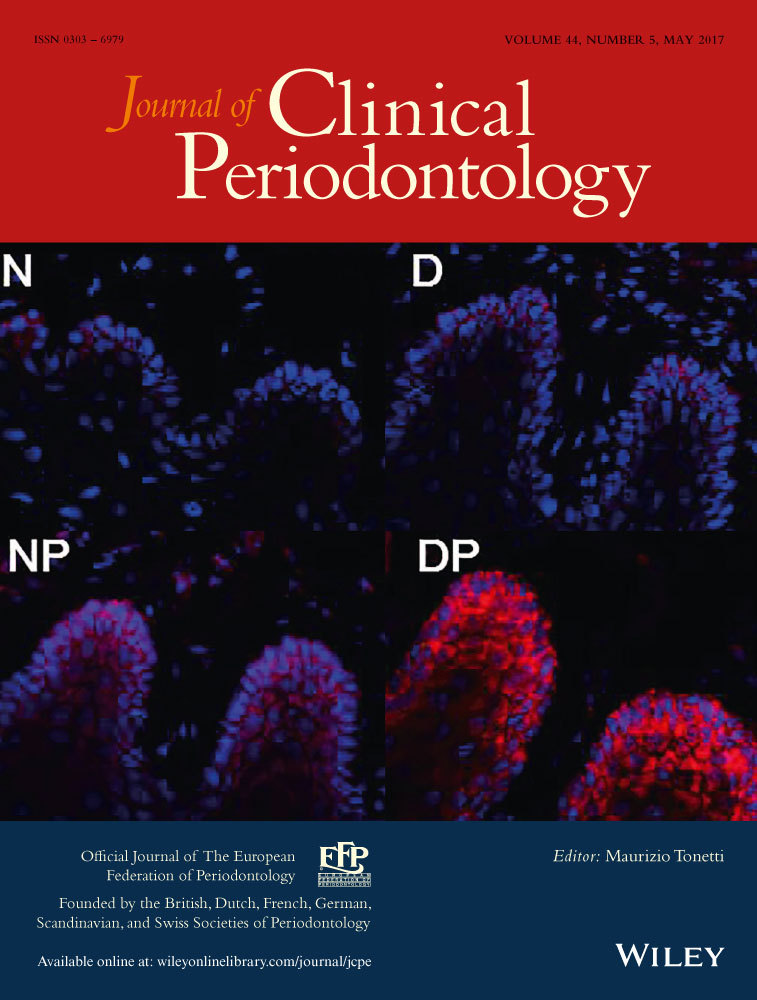Comparisons of periodontal regenerative therapies: A meta-analysis on the long-term efficacy
Funding information
This project was partly funded by a grant from the Ministry of Science & Technology in Taiwan (grant number: MOST 103 - 2314 - B - 002 - 032 - MY3).
Abstract
Aim
We conducted a meta-analysis for the long-term differences in treatment outcomes between periodontal regeneration therapies and flap operation.
Methods
A systematic literature search was conducted using the EMBASE, PubMed and Cochrane databases up to June 2016. Treatment outcomes were changes in probing pocket depth and clinical attachment level. We extracted data reported at different time points after periodontal surgery and incorporated all data into the same model. The restricted cubic spline regression was used to estimate the non-linear trend in treatment outcomes. As some studies reported outcomes at multiple time points, we considered several correlation structures for data reported by the same study.
Results
A total of 52 randomized controlled trials were included in our longitudinal meta-analysis. The follow-up length ranged from 0.5 year to 10 years. The trends in the treatment outcomes were similar under different correlation structures. Enamel matrix derivatives (EMD) and guided tissue regeneration (GTR) achieved greater probing pocket depth (PPD) reduction and clinical attachment level (CAL) gain than flap operation (FO) in the long-term follow up, but no differences were found between EMD and GTR.
Conclusion
Compared with FO, periodontal regeneration surgeries achieved greater PPD reduction and gain in CAL after 1 year, and its effects may last for 5–10 years.




